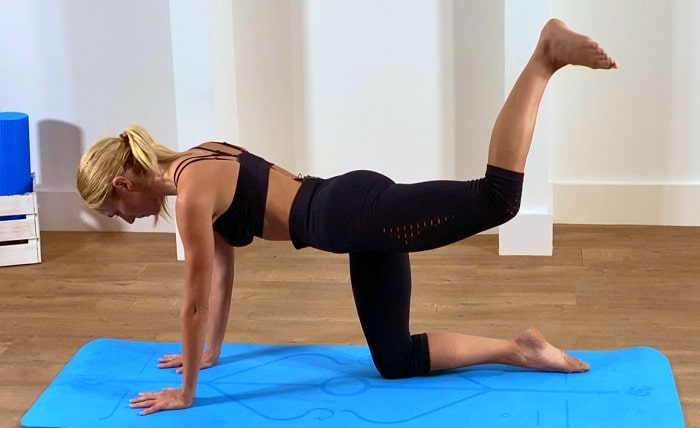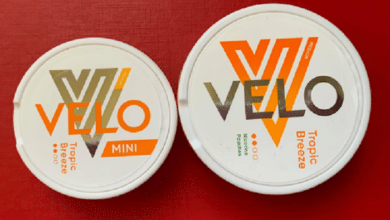How to Target the Lower Glutes for a Lifted and Toned Butt

The lower glutes, also known as the underbutt, are the part of your butt that connects to your hamstrings. They are responsible for extending your hips and stabilizing your pelvis. Many people want to tone and lift this area to improve their appearance and performance. However, not all butt exercises target the lower glutes effectively. In this article, we will show you some of the best lower butt exercises that you can do at home or in the gym.
Why You Should Work Your Lower Glutes
Working your lower glutes has many benefits, such as:
- Improving your posture and alignment. The lower glutes help keep your pelvis in a neutral position and prevent anterior pelvic tilt, which can cause lower back pain and tight hip flexors.
- Enhancing your athletic performance. The lower glutes are involved in many movements, such as running, jumping, sprinting, and climbing. Strengthening them can help you generate more power and speed, as well as prevent injuries.
- Shaping and lifting your butt. The lower glutes contribute to the roundness and fullness of your butt. By working them, you can create a more defined and lifted look.
The Best Lower Butt Exercises
Here are some of the best lower butt exercises that you can try. You can do them with or without weights, depending on your fitness level and goals. For each exercise, aim for 2 to 3 sets of 10 to 15 repetitions.
Glute Bridges
Glute bridges are a great exercise for all levels, and the movement pattern is similar to the more complex exercises featured below. You can perform this exercise with a dumbbell or loop band, or without any equipment.
- Start by lying on your back with your knees bent and arms at your side. If you’re using a dumbbell, hold this across your hip crease. Your feet should be 12–16 inches (30–40 cm) from your butt.
- Press into your heels, brace your core, and push your pelvis upward by squeezing your glutes. Ensure your chest does not lift during this movement.
- Hold for 2 seconds and lower your hips back to the ground. This is one rep.
Hip Thrusts
Hip thrusts are one of the most popular and efficient exercises for growing and strengthening the glutes. They also target the lower glutes more than glute bridges because of the increased range of motion.
- Start on the floor with your shoulder blades resting against a secured bench that’s either against a wall or secured to the floor. Sitting on the floor with your legs straight, place a barbell across the crease of your hips and place your hands around the bar. Alternatively, you can hold a dumbbell.
- Next, bend your knees and have your feet about hip-width apart. Once in position, drive your heels into the ground, brace your core, and push your pelvis upward by squeezing your glutes.
- At the top of the movement, your shins should be vertical, your torso parallel to the ground, and your knees bent at a 90-degree angle. Avoid pushing with your lower back.
- Then, gently bring the weight back down.
If you’re using a barbell, you may wish to use a barbell pad to make the movement more comfortable.
Reverse Lunges
Reverse lunges are a great way to work both legs individually and challenge your balance and stability. They also activate the lower glutes more than forward lunges because they require more hip extension.
- Stand with your feet hip-width apart and hold a pair of dumbbells at your sides.
- Take a big step back with your right foot and bend both knees to lower into a lunge. Your front knee should be aligned with your ankle, and your back knee should be hovering above the floor.
- Push through your front heel to stand up and bring your right foot back to the starting position. This is one rep.
- Repeat on the other side and alternate legs.
Single-Leg Squats
Single-leg squats are an advanced exercise that require a lot of strength, balance, and mobility. They work both the upper and lower glutes by forcing them to stabilize the hip joint while performing a deep squat.
- Stand on one leg with your other leg lifted off the ground in front of you. You can hold onto something for support if needed.
- Slowly bend your standing knee and lower yourself into a squat as low as you can go without losing form. Keep your chest up and core engaged.
- Press through your heel to stand up and return to the starting position. This is one rep.
- Repeat on the other leg.
Side-Lying Hip Abductions
Side-lying hip abductions are an isolation exercise that target the gluteus medius, the muscle on the side of your butt. This muscle helps abduct (move away from the midline) and rotate your hip. It also supports your lower glutes by preventing your hips from sagging.
- Lie on your right side with your legs stacked and your head resting on your right arm. You can bend your bottom leg slightly for stability.
- Lift your left leg up as high as you can without rotating your hips or torso. Keep your toes pointed forward and squeeze your glutes at the top of the movement.
- Lower your leg back to the starting position. This is one rep.
- Repeat on the other side.
Front Planks With Hip Extension
Front planks are a core exercise that also work your glutes by keeping them contracted throughout the movement. Adding a hip extension to the plank increases the activation of the lower glutes by extending the hip joint.
- Start in a plank position with your elbows under your shoulders and your body in a straight line. You can either have your feet together or slightly apart.
- Lift your right leg up as high as you can without arching your back or twisting your hips. Keep your leg straight and squeeze your glutes at the top of the movement.
- Lower your leg back to the starting position. This is one rep.
- Repeat on the other side and alternate legs.
Conclusion
The lower glutes are an important muscle group that can improve your appearance, health, and performance. By doing these exercises regularly, you can target and strengthen your lower glutes and achieve a lifted and toned butt. Remember to warm up before exercising, use proper form, and adjust the intensity according to your level. You can also combine these exercises with other butt exercises and cardio activities for a well-rounded workout routine.


